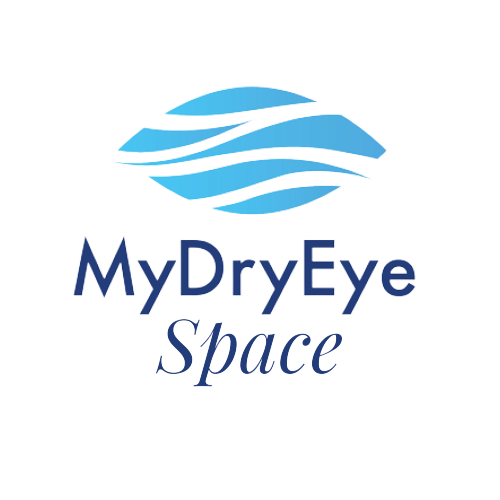Ce message Combien de temps dure LipiFlow apparu pour la première fois sur MyDryEye.ca
Il a été écrit par Dr. Diane Nguyen.
Veuillez visiter MyDryEye.ca pour visiter le message original.
La sécheresse oculaire (DED) est un problème de vision qui survient lorsque vos yeux ne produisent pas suffisamment de larmes ou que quelque chose ne va pas pendant le processus de production de larmes.
Les yeux secs s'accompagnent de divers symptômes irritants, donc la première chose à laquelle vous pensez est probablement trouver un soulagement. Le LipiFlow système de pulsation thermique est un système de traitement innovant qui peut vous apporter ce soulagement.
Examinons de plus près la sécheresse oculaire, le fonctionnement de LipiFlow, sa durée et les différents outils pour la sécheresse oculaire qui peuvent vous aider à trouver un soulagement.
Un examen plus approfondi de la sécheresse oculaire
Le SSO est l'un des problèmes de vision les plus courants : on estime 25 % des Canadiens aux yeux secs.
La production de larmes est un élément essentiel pour garder vos yeux en bonne santé et éviter les yeux secs. L’instabilité des larmes peut entraîner une inflammation et également une sécheresse oculaire. Vos larmes sont composées de 3 couches :
- La couche externe huileuse
- La couche intermédiaire aqueuse
- La couche de mucus interne
La couche grasse est créée par les glandes de Meibomius, de minuscules glandes qui tapissent vos paupières supérieures et inférieures. S’ils deviennent enflammés ou bloqués, ils ne peuvent pas sécréter d’huile, ce qui affecte la qualité de vos larmes. Cette inflammation est liée au dysfonctionnement de la glande de Meibomius (MGD), une cause fréquente de SSO.
Certains signes et symptômes du SSO incluent :
- Yeux piquants ou granuleux
- Yeux irrités et inconfortables
- Vision fluctuante
- Sensation de corps étranger (impression que quelque chose se trouve dans vos yeux)
La sécheresse oculaire peut être classée en 2 groupes principaux :
- La sécheresse oculaire par évaporation se produit lorsque les glandes de Meibomius ne produisent pas suffisamment de sébum, ce qui entraîne une évaporation trop rapide de vos larmes.
- La sécheresse oculaire déficiente en eau se produit lorsque la glande lacrymale ne produit pas suffisamment de partie aqueuse de la couche lacrymale.
La sécheresse oculaire peut être difficile à gérer. La bonne nouvelle est qu'il existe options de traitement qui peuvent vous aider à trouver un soulagement, comme LipiFlow.
Exploration du processus LipiFlow
Votre médecin préparera pour vous un plan de traitement personnalisé après votre évaluation complète de la sécheresse oculaire. LipiFlow peut être une excellente option pour aider à gérer la sécheresse oculaire.
LipiFlow, ou expression chauffée des glandes de Meibomius, est une procédure en cabinet de 12 minutes qui élimine les glandes de Meibomius bloquées au niveau de vos paupières supérieures et inférieures. Il utilise une combinaison de chaleur et massage doux pour éliminer les blocages et les obstructions dans les glandes. Ce processus permet une meilleure circulation des huiles dans votre film lacrymal pour des yeux sains.
Votre optométriste ou votre hygiéniste oculaire :
- Êtes-vous assis confortablement
- Appliquez des gouttes anesthésiantes sur vos deux yeux
- Placez un écran spécialisé qui ressemble à une lentille de contact sur vos yeux et derrière vos paupières et il agit en appliquant de la chaleur et une légère pression sur votre paupière
- L'ensemble de la procédure de relaxation prend 12 minutes jusqu'à ce qu'elle soit terminée
LipiFlow fonctionne souvent en conjonction avec des thérapies à domicile, telles que :
- Sans conservateur gouttes pour les yeux pour lubrifier vos yeux
- Hygiène des paupières pour réduire l'accumulation de bactéries et de débris
- Compléments alimentaires, comme Oméga-3
Puissance durable LipiFlow
LipiFlow est une solution efficace pour traiter la sécheresse oculaire par évaporation, le type de SSO le plus courant, représentant plus de 85 % des cas de sécheresse oculaire.
LipiFlow procure généralement un soulagement aux patients 2 à 4 semaines de traitement. Une seule séance de traitement LipiFlow de 12 minutes a entraîné jusqu'à 12 mois d'amélioration durable de la fonction des glandes de Meibomius, du temps de rupture des larmes et de la sécheresse oculaire. soulagement des symptômes.
Cependant, la sécheresse oculaire étant une maladie chronique, certains patients peuvent avoir besoin d'un entretien ou d'une « retouche » dans un délai d'un an.
Trouver un soulagement contre la sécheresse oculaire
La sécheresse oculaire peut nuire à votre productivité, provoquer une gêne et même endommager vos yeux. Se faire soigner le plus tôt possible est essentiel pour préserver votre confort et votre vision. LipiFlow est un traitement éprouvé qui peut apporter un soulagement à long terme.
Trouvez un spécialiste de la sécheresse oculaire pour aller au fond de vos symptômes de sécheresse oculaire et voir si LipiFlow est une bonne option de traitement pour vous.

How Stress Shows Up in Your Eyes
Stress shows in your eyes: burning, twitching, watery or red. Discover the link between cortisol and tear film instability and explore breathing, blinking and sleep strategies to break the cycle.
What Your Eyes Are Telling You About Your Hormones
Dry, burning eyes often signal shifts in estrogen, progesterone or androgens. Learn how hormones influence tear production, why women are more affected and how to nourish your glands for lasting comfort.
In‑Office Treatments for Dry Eye: What Really Works?
Dry eye relief goes beyond drops. Learn how in‑office treatments like LipiFlow, IPL and RF unclog glands and restore comfortable vision. Discover the science behind these procedures and how to maintain results at home.






















